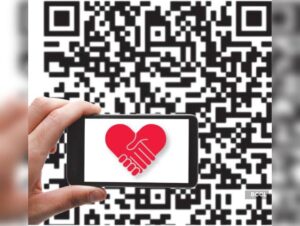Companies all across the world are adopting cutting-edge methods to increase output while decreasing complexity as a direct result of the speed with which new technologies are being developed. The steel and metal business is no different from the rest of the manufacturing sector in terms of the complexity of its supply chains and operations. The Quick Response (QR) code is a relatively new tool in this field. While quick response (QR) codes were primarily developed for the automotive industry, they have since found widespread application, notably in the steel and metals sector. Here, we explore the many commercial uses for quick response (QR) codes.
- Inventory Management:

In the metal and steel sector, timely usage of raw materials depends on keeping correct stock counts. Input, process, and product statuses may all be tracked in real-time with the use of QR codes. A QR code can hold a variety of pieces of information about an item, including its dimensions, country of origin, and date of production. Scanning these codes with a mobile device or scanner can help you keep better track of your inventory.
- Quality Control and Traceability:

The metal and steel sector relies heavily on stringent quality control techniques. The entire manufacturing process, from sourcing components to packaging, might be recorded in a QR code. Thus, problems with the quality of production can be rapidly found and fixed. Customers and government agencies can use QR codes to quickly and easily confirm a product’s authenticity and quality. This is a progressive move towards more transparency.
- Repairs and maintenance:

Making steel and other metals requires powerful machinery and equipment. If QR codes are placed on these items, they can be linked to their digital service records. By scanning QR codes, maintenance workers can instantly access information including equipment history, service procedures, and impending tasks. Equipment undergoes timely maintenance, has fewer periods of downtime, and lives longer as a result.
- Safety in the workplace:

Safety is the top priority in any professional setting. Safety equipment and machinery can be equipped with QR codes that link to instructional movies, rules, and emergency procedures. By scanning these codes, workers gain instant access to vital safety information, which helps to reduce the occurrence of accidents and injuries on the job.
- Managing Your Suppliers:
The steel and metals business relies heavily on vendor cooperation. Supplier management is simplified by QR codes since they allow for the digital linkage of raw materials to their origin. Suppliers can save and transfer information like material specs and approvals with the use of QR codes. This makes it easier to confirm the data and makes sure it meets industry standards.
- Customization of products:
The use of QR codes is a creative way to add a personal touch to a product. Putting a QR code on a product is entirely up to the discretion of the manufacturer.
- Data analysis:
The information obtained from scanning QR codes can be utilized for analytical objectives. By tracking customers’ scanning activity and dealing with their systems, producers can understand more about their products, and the efficacy of their business strategies. This method makes it manageable to implement adjustments that increase operations and service delivery because it is data-driven.
QR codes are particularly beneficial in the steel and metals industries. QR codes may result in a technological change in the metal and steel industry, ushering in a period of phenomenal innovation and quality.






